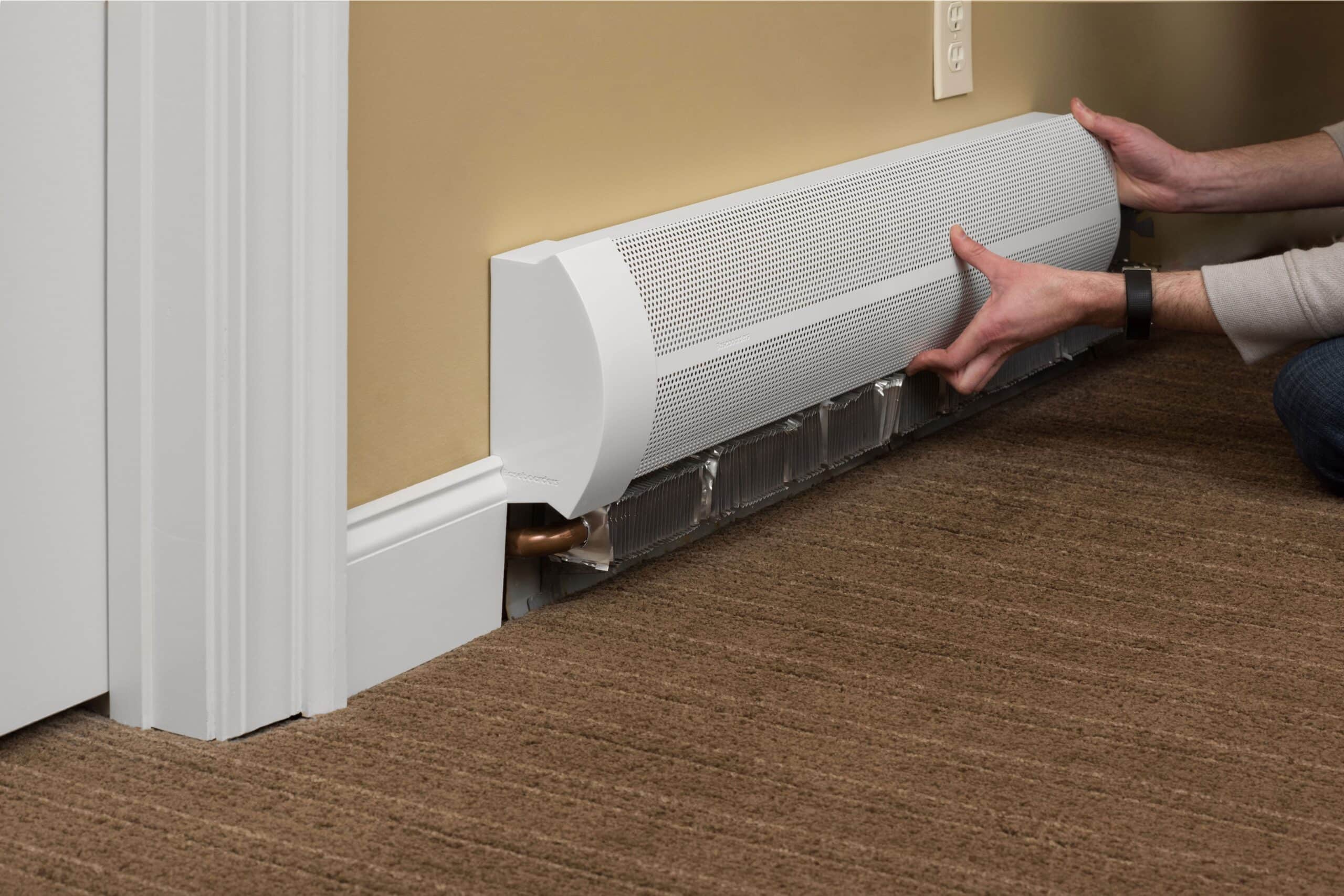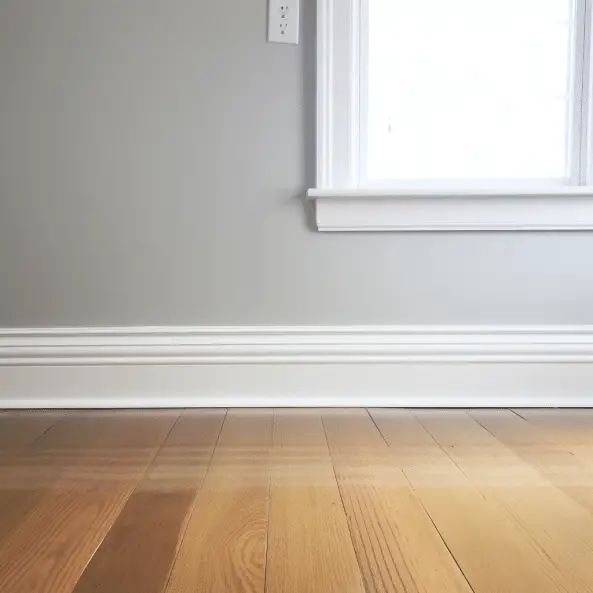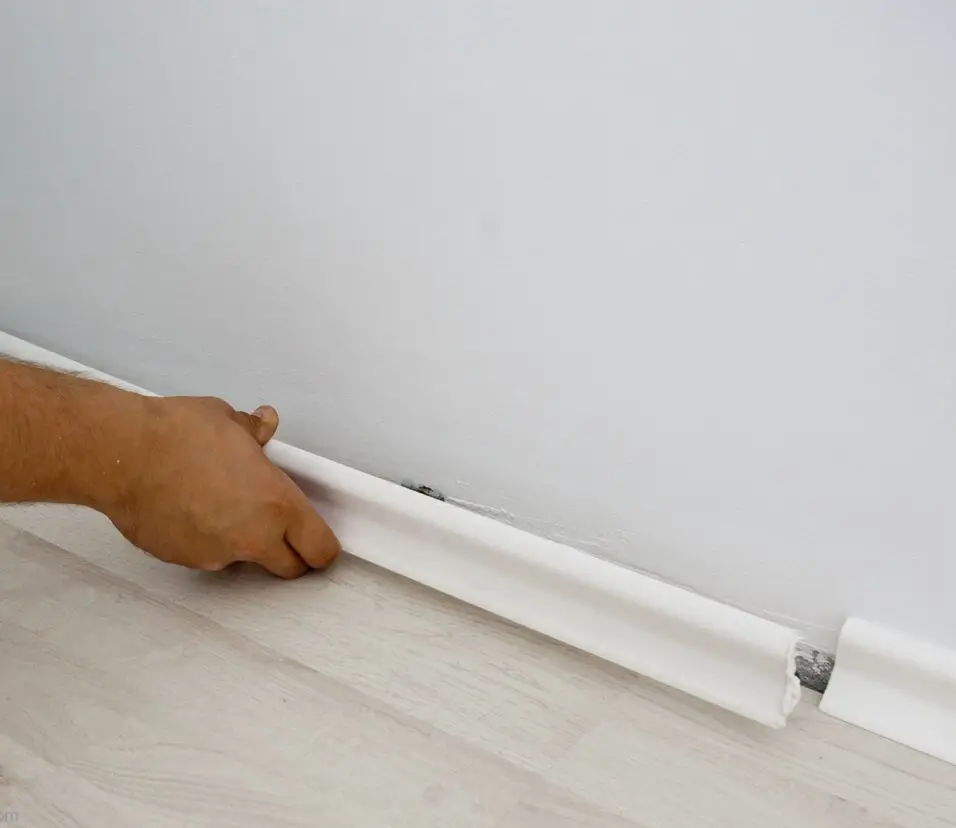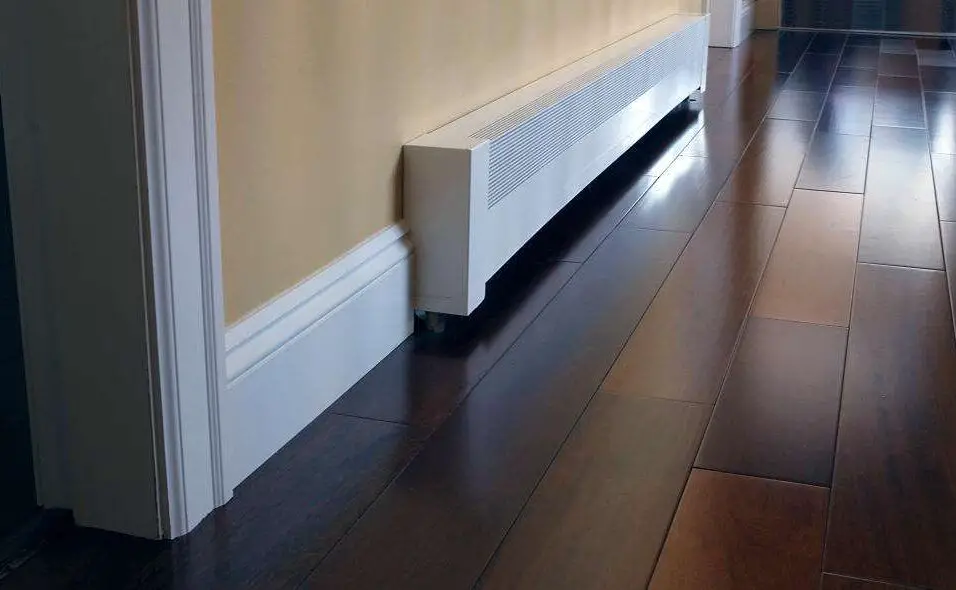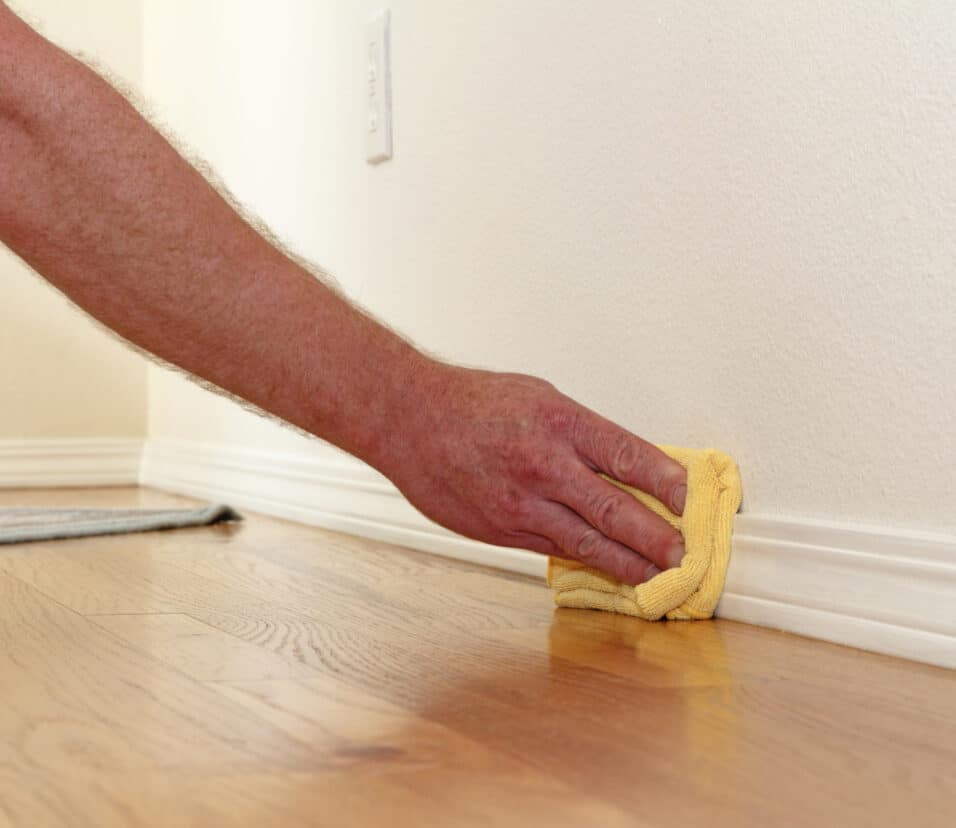How To Work Around Baseboard Heaters
Introduction
How To Work Around Baseboard Heaters: Baseboard heaters are a common heating solution in many homes, providing warmth and comfort during the colder months. However, they can also present some challenges when it comes to furniture placement and overall room design. If you’re looking for ways to work around baseboard heaters and make the most of your space, this article is for you.
These heaters are typically installed along the baseboard of a room and use convection to heat the air. As the air near the heater warms up, it rises and creates a natural circulation of warm air throughout the room. This means that blocking the airflow around the heater can reduce its efficiency and effectiveness.
Consider the placement of your furniture in relation to the wash baseboard heaters. It’s best to leave a clear space in front of the heaters to allow for proper airflow. Avoid placing large pieces of furniture directly in front of the heaters, as this can obstruct the heat and prevent it from circulating effectively. Instead, try to position your furniture a few inches away from the heaters to allow for adequate airflow.
You can use furniture and decor to help redirect the heat from the baseboard heaters. For example, placing a shelf or bookcase above the heaters can help to redirect the warm air towards the center of the room. This can be especially useful if you have a large, open space where the heat tends to dissipate quickly. Similarly, using reflective materials such as mirrors or metallic accents can help to bounce the heat back into the room, rather than allowing it to escape through windows or walls.

What is the best way to cover baseboard heaters?
Steel baseboard heater covers are preferred by homeowners and experts. Because of their great heat conductivity and sleek, modern style, they go well with many home designs.
There are several ways to cover baseboard heaters to improve their appearance and efficiency. Many homes have baseboard heaters, but their appearance can be unattractive. There are several ways to decorate your room or hide an unattractive baseboard heater.
A baseboard heater cover is a popular technique to cover them. These covers go over the heater and look better. Choose one that complements your decor from a selection of styles and materials. Some covers are wood, others metal or plastic. They can be painted to match your walls or left natural.
Radiator covers can also cover baseboard heaters. Baseboard heater covers are smaller than radiator covers, which go over radiators. They can also cover baseboard heaters. Radiator covers, like baseboard heater covers, come in many shapes and materials to suit your taste.
Covering your baseboard heater with a decorative screen or room divider is a cheaper solution. These screens may be moved and altered and come in many patterns. They can enhance your room while permitting airflow around the heater. Whatever solution you use, be sure any cover or screen doesn’t block airflow around the baseboard heater. Leave space for airflow to ensure optimum heating. For optimum fit and safety, follow the manufacturer’s directions when installing any cover or screen.
Can you put things against baseboard heaters?
Baseboard heaters should be at least 6 inches away from curtains, chairs, and other things that can catch fire.
Things can be put against baseboard heaters, but be careful and follow safety rules. Baseboard heaters that are mounted on the wall are popular in homes. The heat comes from either electric resistance coils or the flow of hot water. It is very important to keep things away from baseboard heaters to avoid fire and harm. Keep things that can catch fire 12 inches away from the heater. The heater could set furniture, drapes, rugs, and other things on fire.
Putting things right up against the baseboard heater can cut down on airflow and performance. If the heater gets too hot, it can damage things. Let air flow and heat spread around the heater. In this way, the heater stays in good shape.
If you put furniture near a floor heater, cover it with a heat shield or something that can handle the heat. Heat shields keep you safe. You put them between the heater and the item. They are made of metal or ceramic. Baseboard heaters work best when they are checked and maintained on a regular basis. Ineffectiveness and movement are limited by dust and other things on the heater. Regular cleaning and repair keep heaters working well and extend their life.
Can you put a cabinet over a baseboard heater?
For two things, make sure there is enough air flow and keep the wood above from getting too hot. If you hang a 12″ wide bookcase over a baseboard heater, air will not be able to move as easily. You can either raise the bookcase as much as you can or move the radiator to the front edge of the bookshelf.
You can put a cabinet on top of a floor heater, yes. There are, however, some things that need to be thought about to make sure safety and effectiveness. The way that baseboard heaters heat a room is by using air currents. They are usually put up along the floor of a wall, which can make it hard to put furniture where you want it.
It’s also important to think about the cabinet’s material and how it’s put together. To lower the risk of fire, the closet should be made of materials that don’t catch fire. Like wood cabinets, they can start a fire if they are put too close to a floor heater. Cabinets that will go over baseboard heaters should usually be made of metal or a material that can handle heat.
Another thing to think about is how it will affect how well the baseboard heater heats the room. If you put a cabinet over the heater, it can block the wind and make the heater less effective. It’s important to make sure the closet doesn’t stop the heat from getting into the room. It is possible to do this by putting enough room between the cabinet and the wall and using materials that let heat move.
Can you cover baseboard heaters with furniture?
You can cover your baseboard heater with furniture, sure. But if you don’t do this carefully, you might end up impeding the path of the heated air. This can reduce the efficiency of your heating. Paint is another option, but it doesn’t last long.
Yes, it is possible to cover baseboard heaters with furniture. However, there are a few important considerations to keep in mind when doing so. Baseboard heaters are designed to provide heat to a room by radiating warmth from the bottom of the unit. Placing furniture directly in front of a baseboard heater can obstruct the flow of heat and reduce its effectiveness. Therefore, it is important to take certain precautions to ensure that the furniture does not impede the performance of the heater.
Additionally, it is important to choose furniture that does not completely block the heat from radiating into the room. For example, selecting furniture with open or slatted designs can help to allow the heat to pass through. Avoiding furniture with solid backs or large, solid pieces that cover the entire front of the heater is advisable. By choosing furniture that allows for the free flow of heat, you can ensure that the baseboard heater remains effective in heating the room.
It is important to regularly check the baseboard heater for any signs of overheating. Placing furniture too close to the heater can cause it to work harder and potentially overheat. This can be dangerous and may lead to a fire hazard. Therefore, it is crucial to monitor the temperature of the heater and ensure that it is not being obstructed by furniture.
Can curtains touch baseboard heaters?
Heaters for electric baseboards
Curtains and drapes should never touch the heater. There must be at least 8 inches of space between the bottom of short drapes or curtains and the top of the heater.
It is possible for curtains to touch baseboard heaters. But there are some things you should do to make sure your home is safe and to avoid any possible fire risks. By using electric coils or hot water lines, baseboard heaters are made to heat a room. Most of the time, they are put up along the floor of a wall, which can be close to windows or curtains.
Generally, curtains should be kept at least 12 inches away from floor heaters to avoid any fire risks. These measurements make sure that air can flow properly and keep the curtains from touching the heater’s hot surface. If the curtains are too close to the heater, the high temperatures could cause them to catch fire or melt.
Also, keep in mind that the right blinds need to be used in rooms with baseboard heaters. Heavy, thick curtains can trap heat and stop it from moving around properly. This can make the floor heater work harder and possibly get too hot. Sheer, lighter curtains are better because they let more air flow and keep heat from building up around the heater.
Are there any specific safety precautions that need to be taken when working around baseboard heaters?
When working around baseboard heaters, it is important to take certain safety precautions to prevent accidents and ensure the well-being of everyone in the space. Firstly, it is crucial to keep flammable materials such as curtains, furniture, and rugs at a safe distance from the heaters. These materials can easily catch fire if they come into direct contact with the heat source. Additionally, it is recommended to install a heat-resistant barrier or guard around the baseboard heaters to prevent accidental burns, especially if there are children or pets in the area.
It is essential to never block the airflow around the baseboard heaters. Blocking the airflow can cause the heaters to overheat, potentially leading to a fire hazard. It is advisable to maintain a clearance of at least 12 inches in front of the heaters to ensure proper ventilation. Regularly inspecting the heaters for any signs of damage or malfunction is also important. If you notice any frayed wires, loose connections, or unusual smells, it is crucial to turn off the heaters immediately and seek professional assistance.
Can baseboard heaters be easily moved or relocated within a room?
Baseboard heaters are typically designed to be permanently installed in a specific location within a room. Unlike portable space heaters, which can be easily moved around, baseboard heaters are not intended to be relocated frequently. This is because baseboard heaters are typically hardwired into the electrical system of a building and require a dedicated circuit for operation.
However, it is possible to move or relocate a baseboard heater if necessary. This would typically involve disconnecting the heater from the electrical supply, removing it from its mounting brackets, and reinstalling it in a new location. It is important to note that moving a baseboard heater may require the assistance of a professional electrician to ensure that the electrical connections are properly handled and that the heater is installed safely and in compliance with local building codes.
Are there any specific maintenance tasks that need to be performed regularly on baseboard heaters?
Yes, there are certain maintenance tasks that should be done on baseboard heaters on a daily basis to make sure they work well and last a long time. One important thing to do is to clean the heaters on a daily basis to get rid of any dust or dirt that may have built up on the outside or inside. To do this, vacuum the heaters softly or wipe them down with a soft cloth. Also, you should check the heaters’ fins and fix any that are bent to make sure air flows properly.
Along with cleaning, it’s important to check the baseboard heaters’ electrical connections on a frequent basis. Not only can loose or broken connections make the heaters less effective, they can also be dangerous. Because of this, it is important to make sure that all electrical connections are tight and don’t show any signs of wear or damage.
Also, it’s a good idea to check the temperature settings on the baseboard heaters every so often. Thermostats can become inaccurate over time, which can cause heaters to work less efficiently or temperature changes. By adjusting the thermostats or changing them if needed, you can make sure that the baseboard heaters stay at the right temperature and keep the room warm.
Are there any energy-efficient alternatives to baseboard heaters that can help reduce heating costs?
Yes, there are several energy-efficient alternatives to baseboard heaters that can help reduce heating costs. One popular option is a heat pump, which uses electricity to transfer heat from the outside air or ground into your home. Heat pumps are highly efficient and can provide both heating and cooling, making them a versatile choice. Another option is radiant floor heating, which involves installing heating elements beneath the floor to provide consistent and comfortable warmth. This type of heating system is highly efficient because it heats objects directly, rather than just the air.
Additionally, pellet stoves are another energy-efficient alternative to baseboard heaters. These stoves burn compressed wood pellets to generate heat, and they can be a cost-effective and environmentally friendly option. Another option is a high-efficiency gas furnace, which uses natural gas or propane to provide heat. These furnaces are designed to maximize energy efficiency and can significantly reduce heating costs. Finally, programmable thermostats can also help reduce heating costs by allowing you to set specific temperature schedules and adjust settings based on your needs.

Conclusion
Overall, working around baseboard heaters can be a challenging task, but with the right knowledge and techniques, it is definitely possible. By following the steps mentioned above, such as creating proper clearance, using heat-resistant materials, and ensuring proper ventilation, you can effectively work around baseboard heaters without compromising safety or functionality.
It is important to remember that baseboard heaters are designed to provide efficient heating, and any obstruction or improper installation can hinder their performance. Therefore, it is crucial to take the necessary precautions and consult professionals if needed to ensure that your modifications or additions do not interfere with the functioning of the heaters.
Regular maintenance and cleaning of baseboard heaters are essential to keep them in optimal condition. Dust and debris can accumulate over time, reducing their efficiency and potentially causing safety hazards. By regularly cleaning and inspecting the heaters, you can prevent any issues and ensure their longevity.
Working around baseboard heaters requires careful planning and consideration. It is important to prioritize safety and functionality while making any modifications or additions. By following the guidelines provided and seeking professional help when needed, you can effectively work around baseboard heaters and create a comfortable and safe environment in your home or office.



